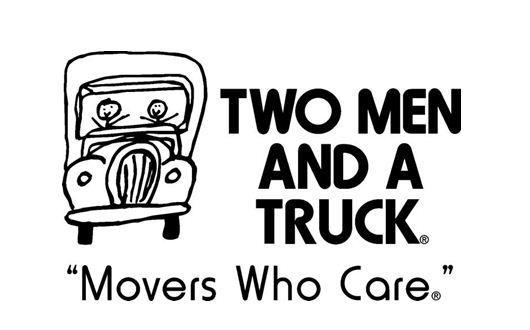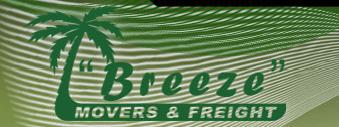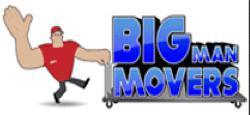LAST REVIEW
<QuerySet [<Review: Bob H., The entire proc>, <Review: Kevin A, Worst Governmen>, <Review: William O., The folks appea>, <Review: Mark Jester G., Unprofessional >, <Review: Scott Hiles, Sunny, Javi, an>, <Review: julian d watts, Our movers arri>]>
5
1
4
Reviewed <QuerySet [<Review: Bob H., The entire proc>, <Review: Kevin A, Worst Governmen>, <Review: William O., The folks appea>, <Review: Mark Jester G., Unprofessional >, <Review: Scott Hiles, Sunny, Javi, an>, <Review: julian d watts, Our movers arri>]> times,
customer satisfaction.
United States
Florida
Killarney
Our movers arrived on schedule and performed in an outstanding manner. We were totally impressed with the care and attention to detail. Each of our wishes were totally considered and in compliance. We appreciated their professional touch and care to each item touched during the move. Appreciate Avualdo/Acevedo they and the third gentleman were careful, hard working and sincere with our furnishings and move. Wow!
LAST REVIEW
<QuerySet [<Review: Danny C., Black Wolf Move>, <Review: Ben L., I have never po>, <Review: Ashley B., One star is exc>]>
5
1
3
Reviewed <QuerySet [<Review: Danny C., Black Wolf Move>, <Review: Ben L., I have never po>, <Review: Ashley B., One star is exc>]> times,
customer satisfaction.
United States
Florida
Killarney
One star is excessively liberal for this scrappy moving operation!! They additionally hold your possessions prisoner until the bill is paid! Compounding an already painful situation, subsequent to paying them with a check, they chose to charge my Visa in any case $400 more than we settled upon! Obviously, stay far from these criminals!
LAST REVIEW
<QuerySet [<Review: Patrick M, We utilized Seb>, <Review: Jennifer G., We had an aweso>, <Review: Marco D., I e-mailed for >]>
5
1
3
Reviewed <QuerySet [<Review: Patrick M, We utilized Seb>, <Review: Jennifer G., We had an aweso>, <Review: Marco D., I e-mailed for >]> times,
customer satisfaction.
United States
Florida
Killarney
I e-mailed for an estimate, gave the dates of my move which were very tight, within a couple weeks of the e-mail. In the interim other companies contacted me first with compelling estimates and professional service. I told begins via phone and e-mail multiple times that I had found another mover. They continued to call and e-mail on a daily basis.
LAST REVIEW
<QuerySet [<Review: anthony marrazzo, The absolute mo>, <Review: Sarv K, Horrible experi>, <Review: Sheila Frazier, If I cold give >]>
5
1
1
Reviewed <QuerySet [<Review: anthony marrazzo, The absolute mo>, <Review: Sarv K, Horrible experi>, <Review: Sheila Frazier, If I cold give >]> times,
customer satisfaction.
United States
Florida
Killarney
If I cold give ZERO stars I would!!! This was an awful experience! First, they were the third party of another horrible company OpenRoad Moving,, who even tho they portrayed themselves as movers, were actually only brokers and Pac-N-Go was the actual moving company. The movers came on the day they were supposed to come but did not arrive until after 7 and there were 8 extra items, none large, to be added and it increased our price by $1000 according to them. Then there was only one mover, not a team like they promised, and it took him over 3 hours once he got started, which was after 9. I had hired the company for my daughter's move out of Gainesville, but I live in Orlando. I found out that instead of moving her belongings on down the road to Texas so they would arrive by 2-3 days later, they brought them to Orlando and were going to load them on a truck and deliver them sometime over the next 3 weeks!!!!. Then I finally kept calling and arguing with Kevin or Tevin, whatever his name is who said he was the owner of the company, and finally agreed to bring my daughter's belongings to my house, 10 miles down the street and I would pay him an outrageous fee to me, but one I was willing to pay to get her belongings back. I gave him $1400 in cash, and supposedly, he had not cashed the $626 cashier's check that she had given his driver the night before. She went to the bank to cancel the check the next day and he had already cashed it and kept denying it. Then he stopped taking my calls and did not answer my texts. This company is a rip-off and the owner is a thief!!! Do not use them or have anything to do with them.
LAST REVIEW
<QuerySet [<Review: Tyra W., We cherish thes>, <Review: Jester O., Not quite satis>, <Review: Annemarie B., This organizati>]>
5
1
3
Reviewed <QuerySet [<Review: Tyra W., We cherish thes>, <Review: Jester O., Not quite satis>, <Review: Annemarie B., This organizati>]> times,
customer satisfaction.
United States
Florida
Killarney
This organization is stunning! i was exceptionally distrustful about movers following the time when our first involvement with another organization. Everything was dealt with generally and we even seen scratches and imprints in our wooden furniture. From the minute our movers from Two Men showed up they were well disposed and positive. For an organization that charges by the hour they moved rapidly and took superb consideration of our stuff. They wrapped the majority of our wooden and other huge furniture to maintain a strategic distance from any harm amid the move. (I'm not certain if this is typical but rather the principal organization unquestionably did not do this.)
I very prescribe this moving organization for your best course of action! My two movers were Frednel and Placide and on the off chance that I can ask for them for a future move, I without a doubt will. I certainly anticipate utilizing this organization again as a part without bounds when we move once more.
LAST REVIEW
<QuerySet [<Review: Mia G., Generally speak>, <Review: Maria B., I've never empl>, <Review: Olivia T., We were extreme>]>
5
1
4
Reviewed <QuerySet [<Review: Mia G., Generally speak>, <Review: Maria B., I've never empl>, <Review: Olivia T., We were extreme>]> times,
customer satisfaction.
United States
Florida
Killarney
We were extremely satisfied with our involvement with Central Movers. I looked and observed their rates to be aggressive. Our apartment suite building required a declaration of protection, which Central Movers could give. They arrived sooner than required for our turn, and worked rapidly, effectively and were deferential. We proceeded onward that day that we shut on our home, so it was somewhat of an upsetting day, however at any rate we didn't need to stress over anything when it went to the physical moving of our stuff.
LAST REVIEW
<QuerySet [<Review: Uzma I., Jesse Stephens >, <Review: Sean K., I have utilized>]>
5
1
4
Reviewed <QuerySet [<Review: Uzma I., Jesse Stephens >, <Review: Sean K., I have utilized>]> times,
customer satisfaction.
United States
Florida
Killarney
I have utilized Jesse Stephens Moving a few times for my moves and I would give them 5/5 with the exception of that on my last move I was not made mindful of the charges for boxing and wrapping every one of my notices and works of art (which they generally simply cover wrapped previously) which then blew my moving spending plan of $700 and expanded the cost to just about $1000 for a two room move. Phenomenal quick movers yet ensure you get a definite assessment on everything first-not only their "not to surpass" gauge.
LAST REVIEW
<QuerySet [<Review: Maria Fe P., They milked the>, <Review: Lauri T., They appeared o>]>
5
1
3
Reviewed <QuerySet [<Review: Maria Fe P., They milked the>, <Review: Lauri T., They appeared o>]> times,
customer satisfaction.
United States
Florida
Killarney
They appeared on time, were super effective, and completed in less than 3 hours. We'll unquestionably be utilizing them for our best course of action. Super wonderful!
LAST REVIEW
<QuerySet [<Review: Lou M, Mark and A Bree>, <Review: george, 5 Star service!>]>
5
1
4
Reviewed <QuerySet [<Review: Lou M, Mark and A Bree>, <Review: george, 5 Star service!>]> times,
customer satisfaction.
United States
Florida
Killarney
5 Star service! There was an Owner present on my job to ensure that everything went smoothly and as planned. Could not have expected a better Move!
LAST REVIEW
<QuerySet [<Review: Matt A., Magnificent gat>, <Review: Mark T., So content with>]>
5
1
4
Reviewed <QuerySet [<Review: Matt A., Magnificent gat>, <Review: Mark T., So content with>]> times,
customer satisfaction.
United States
Florida
Killarney
So content with 1776 Moving and Storage and will completely prescribe them for everyone!!!! Beyond any doubt won't be moving again for quite a while in future, however in the event that anything will call this movers with no questions!
LAST REVIEW
<QuerySet [<Review: Cynthia K, This organizati>, <Review: Kendra M., I have moved a >]>
5
1
2
Reviewed <QuerySet [<Review: Cynthia K, This organizati>, <Review: Kendra M., I have moved a >]> times,
customer satisfaction.
United States
Florida
Killarney
I have moved a couple times and don't have the foggiest idea about an organization I would prescribe, yet Joe with Father and Son attempted to make it right. I was cited a cost, however when the movers got to the house, they all of a sudden got the workplace supervisor on the telephone who cited a higher cost and declined to begin emptying the truck unless forked over all required funds, down to the last cent. I was not told this tenet when booking them. We paid. They moved everything. Nothing irregular, no bugs that we don't saw anything, discovered broken yet, nothing absent. The issue happened when I called the workplace the following day to get a receipt. The receipt faxed to me was the first cost, however we overpaid by $100 on account of the telephone call cost. I talked with Joe, the proprietor, who discounted the cash I overpaid. Would I prescribe this company....maybe. Moving will be moving. Unless you pay for white glove administration, you take what you can get. Joe making it right is the most compelling motivation for my 3 stars. On the off chance that the folks that work there are shady, at any rate the proprietor fixes it.
LAST REVIEW
<QuerySet [<Review: Rick Morgan, They moved me f>, <Review: Phillip, THE WORST MOVIN>]>
5
1
3
Reviewed <QuerySet [<Review: Rick Morgan, They moved me f>, <Review: Phillip, THE WORST MOVIN>]> times,
customer satisfaction.
United States
Florida
Killarney
THE WORST MOVING COMPANY IN ORLANDO... Stay Away!!!
LAST REVIEW
<QuerySet [<Review: Christina H., Movers were exc>, <Review: Marinen B., When they came >]>
5
1
3
Reviewed <QuerySet [<Review: Christina H., Movers were exc>, <Review: Marinen B., When they came >]> times,
customer satisfaction.
United States
Florida
Killarney
When they came to pick up our items, my brand new cell phone was stolen from my home! After I told them, they did an "investigation" but just told us that their employees said they did not take it and left it there. We are 100% sure it was taken by the movers. It is a shame this happened because we were going to recommend them originally.
LAST REVIEW
<QuerySet [<Review: Dyta E., They are awesom>, <Review: Megan M., Having these fo>]>
5
1
4
Reviewed <QuerySet [<Review: Dyta E., They are awesom>, <Review: Megan M., Having these fo>]> times,
customer satisfaction.
United States
Florida
Killarney
Having these folks do the truly difficult work, stacking and emptying was absolutely justified, despite all the trouble and the costs were amazingly sensible. I've paid for private movers before and needed to pay WAY more cash for repulsive work, missing things, and harmed furniture. I got substantially more than I paid for and they surpassed my desires similarly as taking care of my things with consideration and being extremely proficient! Best move encounter ever!
LAST REVIEW
<QuerySet [<Review: Moving Authority, Congratulations>]>
5
1
4
Reviewed <QuerySet [<Review: Moving Authority, Congratulations>]> times,
customer satisfaction.
United States
Florida
Killarney
Congratulations of you becoming compliant with arbitration.















